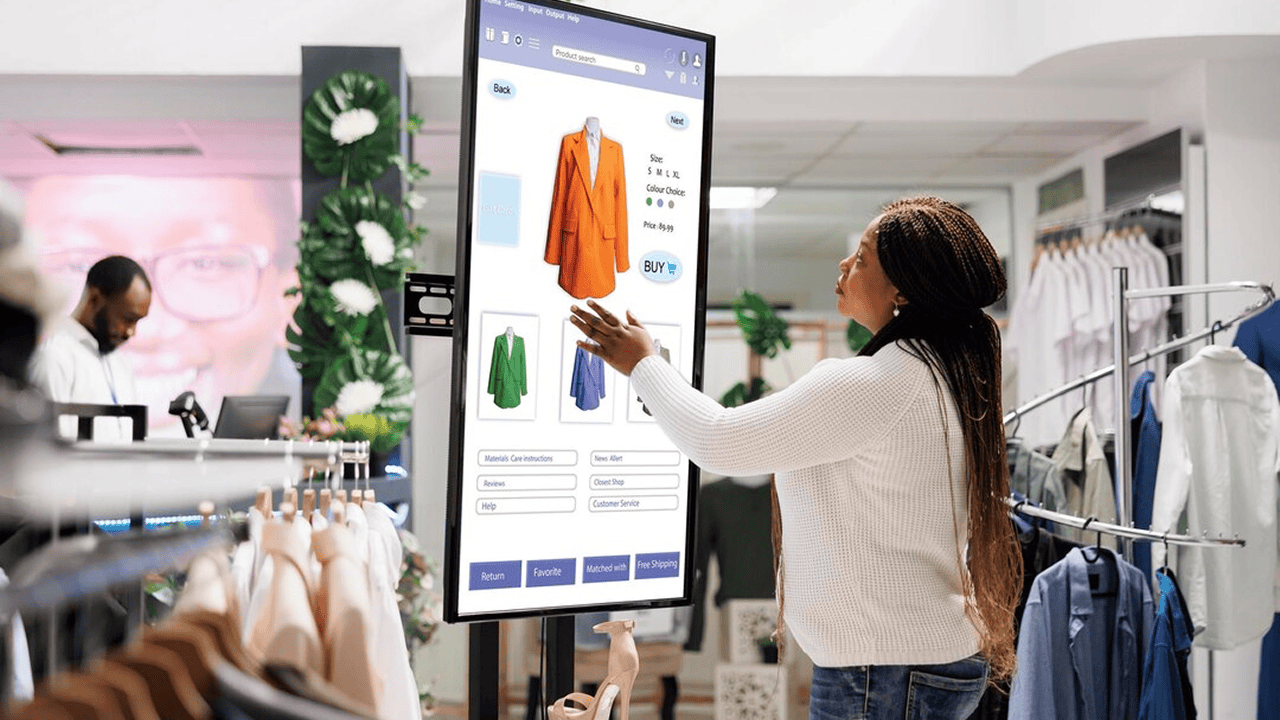
The Future of Retail in 2025: Trends, Challenges, and Strategic Insights
Retail is not what it used to be. In 2025, the landscape has evolved into a complex, dynamic ecosystem driven by rapid technological advancements, shifting consumer expectations, and global economic pressures. This transformation has created new opportunities—and challenges—for retailers who must adapt or risk being left behind.
The Retail Revolution is Here
We are now living in an age where the distinction between physical and digital retail has blurred. Consumers want the convenience of online shopping with the immersive, tangible experiences of brick-and-mortar stores. Retailers that master this hybrid model—delivering both efficiency and engagement—are emerging as leaders.
Digital adoption accelerated during the COVID-19 pandemic and became the catalyst for widespread innovation. What began as crisis response—contactless payments, curbside pickup, digital catalogs—has now matured into a permanent foundation for how consumers expect to shop.
Phygital is the New Normal
“Phygital” (a blend of “physical” and “digital”) experiences are reshaping how we shop. Physical retail spaces are no longer just places to buy things—they are experience hubs augmented with technology.
Smart mirrors let customers try on clothes virtually. QR codes allow instant access to product reviews and tutorials. Mobile checkout and scan-and-go apps are reducing the friction of traditional shopping. Retailers such as Sephora, Nike, and Target are leading this charge with fully integrated phygital ecosystems.
For retailers, this means rethinking store design, staffing, and inventory management to support both digital convenience and in-person value.
AI-Powered Personalization at Scale
In 2025, artificial intelligence is not just a futuristic tool—it’s a core part of retail strategy. From dynamic pricing to customer segmentation, AI is empowering businesses to anticipate and fulfill customer needs in real time.
Machine learning algorithms can analyze vast amounts of data to predict demand, optimize inventory, and personalize product recommendations. AI chatbots and voice assistants are streamlining customer service, offering 24/7 support across platforms.
Retailers using AI to create tailored experiences see higher engagement, lower return rates, and stronger brand loyalty. Amazon and Netflix pioneered this level of personalization, but now even mid-sized retailers can harness these tools thanks to accessible AI platforms.
Retail Media Networks are Booming
Retailers have unlocked a new and highly lucrative revenue stream: Retail Media Networks (RMNs). These are advertising platforms built on retailers’ own digital properties—websites, mobile apps, and loyalty programs.
By leveraging first-party data, retailers can offer brands highly targeted ad placements. For example, a grocery chain might display sponsored food items on its app based on a customer’s purchase history.
Retailers like Walmart, Target, and Kroger have transformed their online stores into high-margin advertising channels. RMNs also benefit customers by delivering more relevant promotions and recommendations.
This new model marks a shift in power—retailers are no longer just distributors; they are becoming digital media platforms in their own right.
The Era of Supply Chain Transparency
Modern consumers demand more than convenience and low prices—they want to know where their products come from and whether the supply chain is ethical and sustainable.
Retailers are now expected to offer transparency into sourcing, labor practices, environmental impact, and delivery processes. This has led to a surge in technologies like blockchain and real-time tracking tools.
Blockchain allows retailers to authenticate product origins and trace items from production to shelf. IoT devices monitor product conditions during transport, ensuring quality and reducing waste. Companies like Everlane and Patagonia have embraced transparency as a core brand value.
Being open and accountable isn’t just good ethics—it’s good business.
Sustainability is a Competitive Advantage
Sustainability is no longer a niche. In 2025, it’s a necessity.
Consumers are increasingly aligning their purchasing decisions with their values. They prefer brands that prioritize eco-friendly practices, reduce waste, and support social causes.
Retailers are responding with sustainable packaging, energy-efficient operations, and circular business models like resale, rental, and repair.
Fast fashion giant H&M, for instance, has introduced in-store recycling bins and a clothing rental program. IKEA has committed to becoming 100% circular by 2030. Even Amazon is investing heavily in electric delivery fleets and low-emission packaging.
Retailers that embrace sustainability are winning trust, earning loyalty, and driving long-term growth.
Unified Commerce Takes Center Stage
Omnichannel was the buzzword of the last decade. In 2025, it’s evolved into unified commerce—a holistic approach that connects front-end experiences with back-end operations in real time.
Rather than managing separate online and offline systems, unified commerce merges everything from inventory to customer data into one cohesive platform.
Benefits include:
- Accurate, real-time stock visibility
- Seamless cross-channel returns and exchanges
- Personalized promotions and loyalty programs
- Faster fulfillment with distributed logistics
Retailers using unified commerce platforms like Salesforce Commerce Cloud or Oracle Retail are achieving higher efficiency, reduced overhead, and better customer experiences.
Small Retailers, Big Capabilities
Thanks to advancements in SaaS and cloud technology, small and mid-sized retailers can now access tools once reserved for giants.
No-code and low-code platforms allow for fast website development, while affordable POS systems offer advanced features like inventory tracking, loyalty integration, and mobile payments.
Tools empowering small retailers in 2025 include:
- Shopify Plus for e-commerce automation
- Square for POS, payroll, and CRM
- Canva and AI tools for design and content creation
- Zapier for workflow automation
These platforms level the playing field, allowing even solo entrepreneurs to compete in branding, fulfillment, and personalization.
Rising Challenges for Modern Retailers
Despite the opportunities, 2025 poses a number of pressing challenges for retailers:
Labor Shortages and Retention
Retail is facing a talent crisis. Low wages, long hours, and demanding customers have made frontline roles less attractive. To solve this, retailers are investing in automation, upskilling, and improved working conditions.
Inflation and Price Sensitivity
As costs rise, consumers are becoming more price-conscious. Retailers must balance margin protection with value-driven pricing strategies, bundling, and tiered offerings.
Cybersecurity and Data Protection
With more data collection comes increased risk. Retailers are frequent targets of cyberattacks. Strong security infrastructure, compliance, and customer education are now mandatory.
Technology Overload and Integration
Many retailers suffer from tech sprawl—multiple disconnected systems that hinder agility. Successful players are consolidating platforms and investing in IT architecture that supports scalability.
Overcoming these hurdles requires strategic leadership and ongoing investment—not just in tools, but in culture, training, and customer-centric innovation.
Tech Innovations Powering the Retail Engine
New technologies are enabling breakthrough innovations that define the shopping experience of tomorrow.
Augmented Reality (AR)
AR apps allow consumers to visualize products in their homes, try on clothes virtually, and interact with products before purchase. This reduces returns and boosts buyer confidence.
Edge Computing
Edge technology processes data closer to the source—on devices or in-store—allowing for faster decision-making, improved personalization, and smoother customer interactions.
Digital Twins
Digital replicas of stores and supply chains allow retailers to test layouts, forecast traffic, and optimize performance without disrupting actual operations.
Voice Commerce
Voice assistants like Alexa and Google Assistant are making shopping hands-free and frictionless, especially for groceries and reorders.
Biometric Payments
Facial recognition and fingerprint payments are replacing cards and cash in high-security environments, streamlining checkout experiences.
Customer Experience is the New Differentiator
Price and product used to define retail success. In 2025, experience is king.
Retailers must focus on crafting personalized, emotionally resonant, and memorable customer journeys.
Key strategies include:
- Real-time personalized recommendations
- Loyalty programs that reward engagement, not just spend
- Seamless returns and fast, flexible fulfillment
- Post-purchase communications and community building
Customer-centric retailers create brand advocates—not just buyers.
The Road Ahead: Thriving in the Retail Future
The retail landscape in 2025 is both exciting and demanding. The stakes are higher, but so are the rewards for those who innovate and adapt.
To succeed, retailers must:
- Embrace digital transformation with intent
- Use data responsibly and strategically
- Center everything around customer experience
- Build ethical, transparent, and resilient supply chains
- View technology not just as a tool, but as a mindset
Retail isn’t dying. It’s evolving—faster than ever before. The brands that thrive will be those that welcome change, anticipate trends, and consistently deliver value with purpose.
